#self portrait with love and death by hans thoma
Text


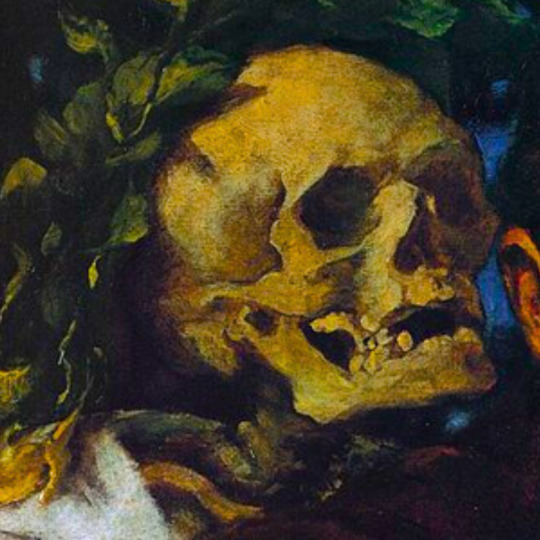
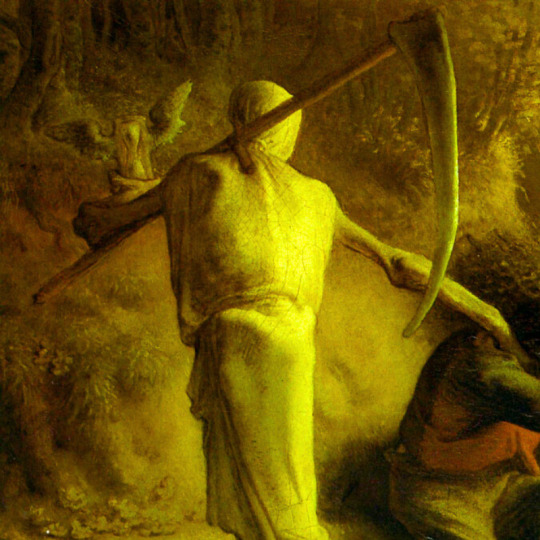
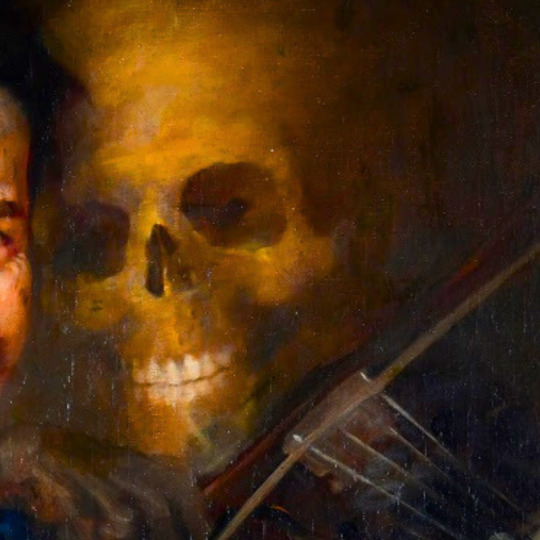

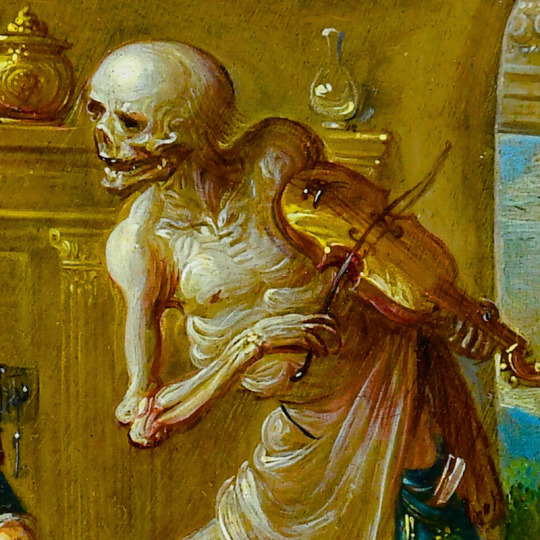
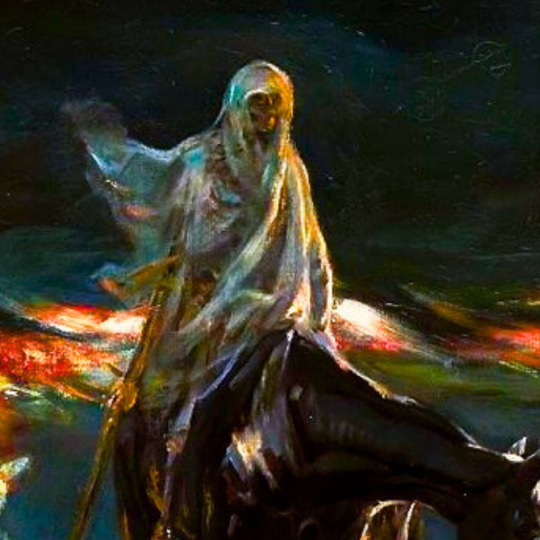


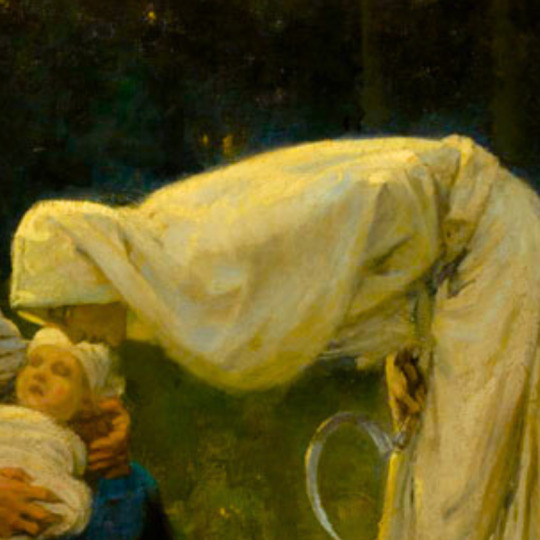
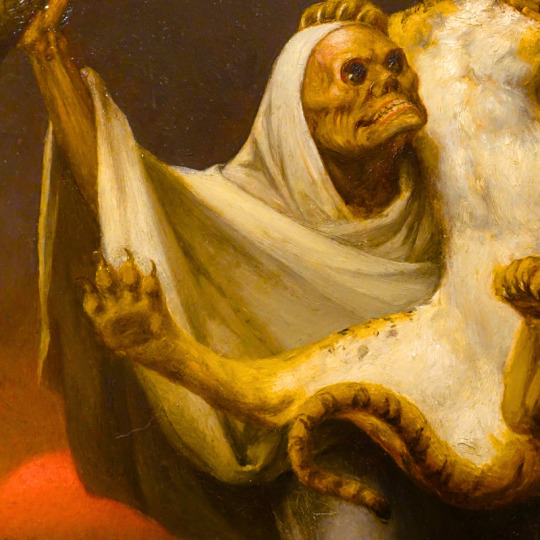


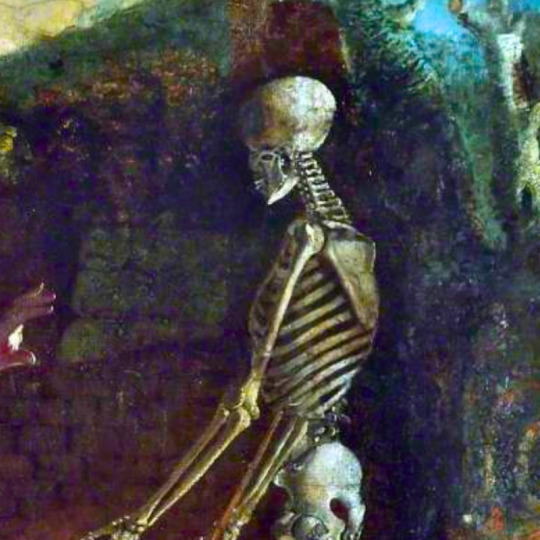

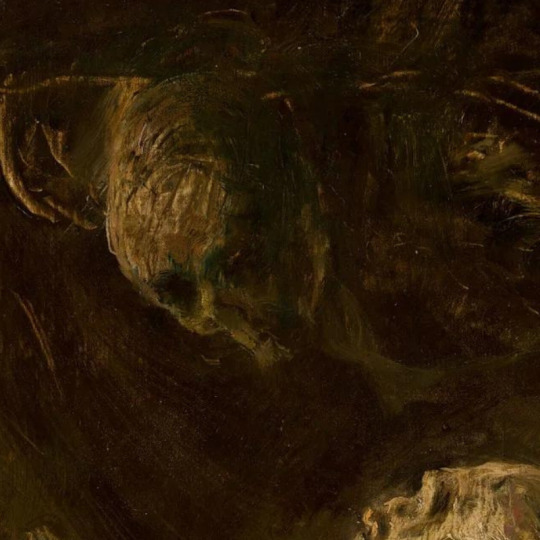


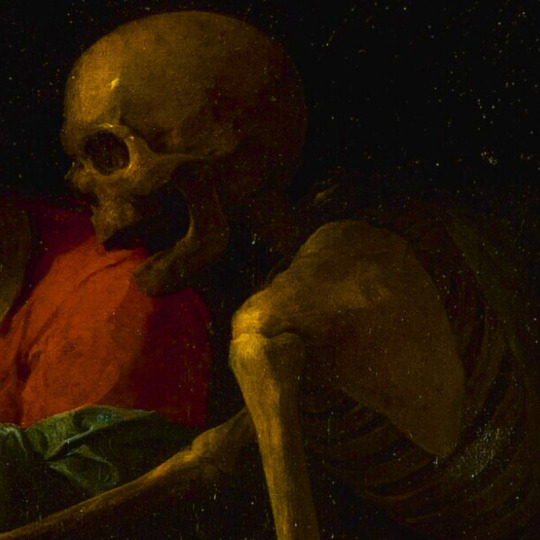

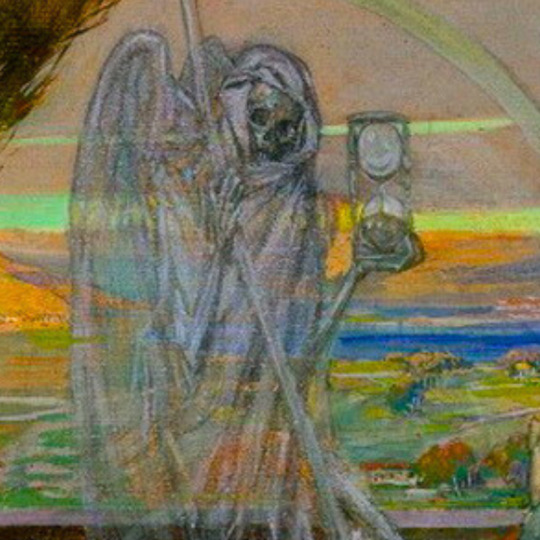
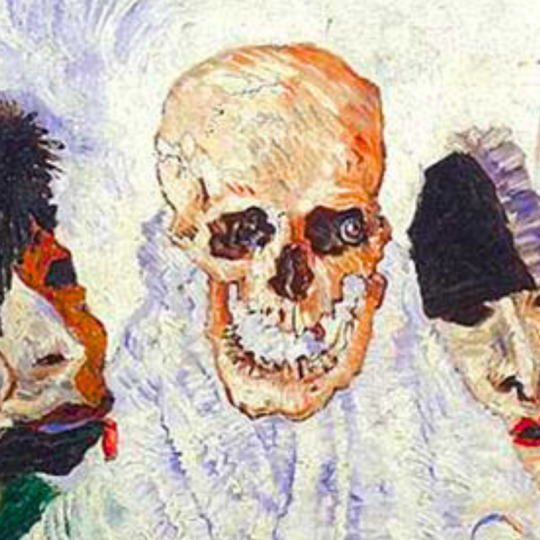
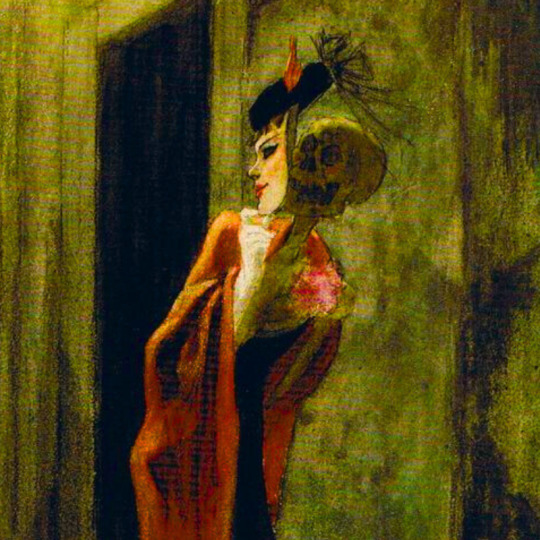
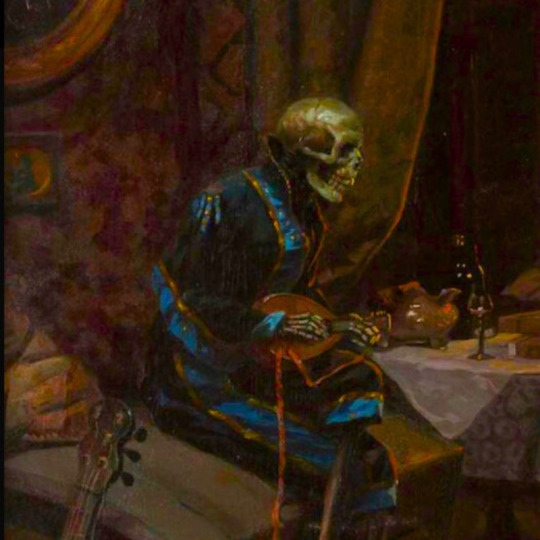




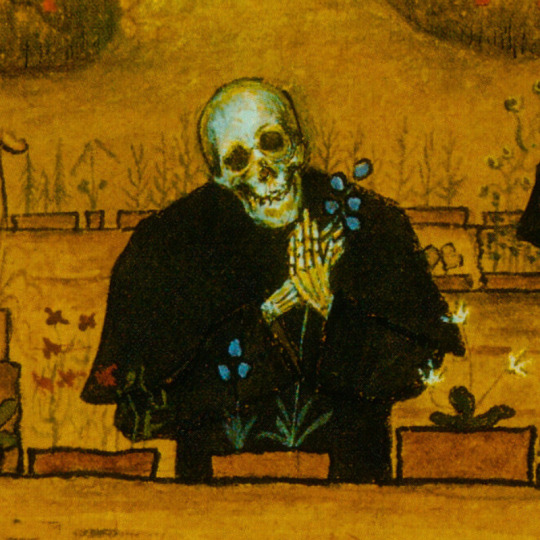
memento mori
#the ballad of lenora by horace vernet#the reaper by stevan aleksic#self portrait with love and death by hans thoma#death and the woodcutter by jean francois millet#self portrait in a tavern by steven aleksic#self-portrait with death playing the fiddle by arnold bocklin#death playing the violin by frans fracken#death and conflagration by albert chmielowski#death and life by gustav klimt#death on the pale horse by gustave dore#death by janis rozentals#power of death by william holbrook beard#death as a general rides a horse on a battlefield by edgar bundy#death vistor by adolph menzel#the old man and death by joseph wright derby#the old man and death by sobeslav pinkas#old man's death by laszlo mednyanszky#smierc by jacek malczewski#death and the miser by hieronymus bosch#death comes to the table of the miser by giovanni martinelli#konec vsech veci by maximilian pirner#a sickly female overlooking a beautiful view by richard tennant cooper#death and the masks by james ensor#the human paraody by felicien rops#the drinker by e plontke#death and the soldier by hans larwin#ahasuerus at the end of the world by adolf hiremy-hirschl#the last friend by zgymunt andrychiewicz smiierc#angel kills firstborn by ilya repin#garden of death by hugo simberg
895 notes
·
View notes
Text

‘Self-Portrait with Love and Death’ by Hans Thoma, c. 1875.
#hans thoma#vintage art#classic art#art#art history#old art#painting#art details#vintage#oil painting#moody art#Cupid#self portrait
365 notes
·
View notes
Text
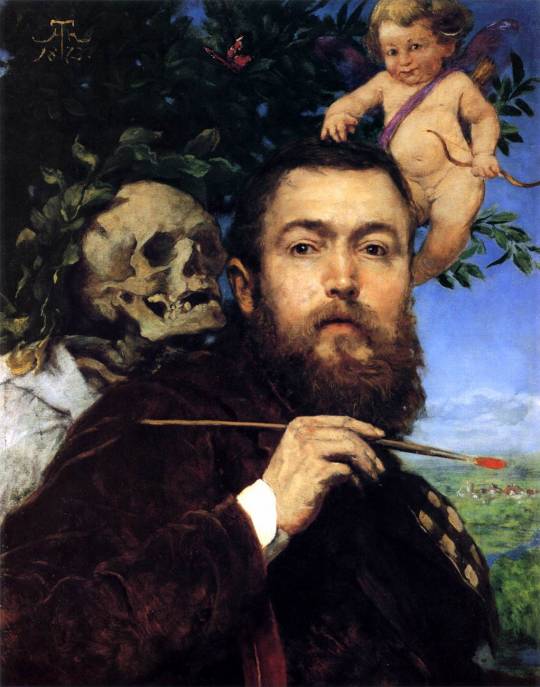
Hans Thoma, Self-Portrait with Love and Death (1875)
13 notes
·
View notes
Photo

Hans Thoma (1839- 1924)German painter.
"Self-Portrait with Love and Death",1875.
36 notes
·
View notes
Text

Hans Thoma, Self-Portrait with Love and Death, 1875.
Courtesy Alain Truong
23 notes
·
View notes
Text
movies, tv shows, and books of 2020
((* is a rewatch/reread; currently watching; can’t get through))
Watership Down by Richard Adams
Archaeology by Walter Shepherd
The Discovery of the Tomb of Tutankhamen by Howard Carter, A.C. Mace
Hot Rod (2007)
Dare Me (s1)
Secret Societies: A History by Arkon Daraul
Ad Vitam (s1)
The Bear and the Nightingale by Katherine Arden *
Лучше, чем люди (s1)
Don’t Look Now (1973)
Cheer (s1)
The Good Place (s4)
Despite the Falling Snow (2016)
The Talented Mr. Ripley (1999)
Portrait of a Lady on Fire (2019)
Under the Skin (2014)
The Invitation (2016)
Hustlers (2019)
The Magicians (s5)
The Girl in the Tower by Katherine Arden
Mandy (2018)
Anne with an E (s3)
About Time (2013)
Spring Breakers (2012) *
God’s Own Country (2017)
Frances Ha (2012) *
The Beauty of the Husband by Anne Carson *
Blue Is the Warmest Colour (2013)
Y Tu Mamá También (2001)
The Argonauts by Maggie Nelson
American Honey (2016)
6 Balloons (2018)
It Comes at Night (2017)
The Peanut Butter Falcon (2019) & *
Berlin Syndrome (2017)
I, Claudius by Robert Graves *
Earthquake Bird (2019)
City of God (2002)
Click (2006)
The Society (s1*)
Roma (2018)
Bojack Horseman (s6)
Taylor Swift: Miss Americana (2020)
Ready or Not (2019)
From Dusk Till Dawn (s1*, s2, s3)
The Sparrow by Mary Doria Russell
On the Beach by Nevil Shute
The Little Hours (2017)
Teeth (2008)
Altered Carbon (s1)
Horse Girl (2020)
The Lighthouse (2019)
Parasite (2019) *
Ragnarok (s1)
McMillions (s1)
To All the Boys: P.S. I Still Love You (2020)
Honey Boy (2019)
Claudius the God and His Wife Messalina by Robert Graves
The Farewell (2019)
Why Did I Ever by Mary Robison *
Howl’s Moving Castle by Diana Wynne Jones *
Fathers and Sons by Ivan Turgenev
Good Time (2017) *
The Pianist (2002)
American Vandal (s1*, s2*)
The Engineer of Human Souls by Josef Škvorecký
Anna Karenina (2012) *
Shameless (s1*, s2*, s3*, s4*, s5*, s6*, s7*, s8, s9, s10)
The Inheritors by William Golding
Animal Farm by George Orwell *
The Trials of Gabriel Fernandez (s1)
Raising Arizona (1987) *
Freaks (2018)
The Little Prince by Antoine de Saint-Exupéry
Lost Girls (2020)
Rat Race (2001) *
The Skeleton Twins (2014)
Pamela by Samuel Richardson
Memoirs of Hadrian by Marguerite Yourcenar
Driving Miss Daisy (1989)
Uncut Gems (2019)
Emma. (2020)
Emma (1996) *
Roswell, New Mexico (s2)
Written on the Body by Jeanette Winterson
The Platform (2019)
Twin Peaks (s1)
Mansfield Park (1999) *
A Ghost Story (2017)
The Duchess (2008) *
20th Century Women (2016) *
A Single Man (2009) *
Tiger King: Murder, Mayhem and Madness (s1)
White Oleander by Janet Fitch *
Clue (1985) *
Summer Night (2019)
Groundhog Day (1993)
Outbreak (1995)
Myths Every Child Should Know by Hamilton Wright Mabie
The Leftovers (s1*, s2, s3)
The Perks of Being a Wallflower (2012) *
Zombieland: Double Tab (2019)
Hans Andersen’s Fairy Tales trans. H. Oskar Sommer
Lives of Celebrated Female Sovereigns and Illustrious Women by Mrs. Anna Jameson
Twilight (2008) *
The Social Network (2010) *
Law & Order: SVU (s2, s3, s4, s20)
Little Women (2019)
New Moon (2009) *
Lucy's Child: The Discovery of a Human Ancestor by Donald C. Johanson & James Shreeve
Pride and Prejudice by Jane Austen *
For Whom the Bell Tolls by Ernest Hemingway
Love Wedding Repeat (2020)
The Big Sick (2017) *
The Hunger Games by Suzanne Collins *
Catching Fire by Suzanne Collins *
Emma by Jane Austen *
Mockingjay by Suzanne Collins *
National Treasure (2004) *
The Hating Game by Sally Thorne *
The Death of Stalin (2017) *
The Girl with All the Gifts (2016)
Alexander the Great by Paul Cartledge
Upload (s1)
Secondhand Time: The Last of the Soviets by Svetlana Alexievitch
The Bling Ring (2013) *
Gravity’s Rainbow by Thomas Pynchon
Killing Eve (s3)
Normal People by Sally Rooney
Contagion (2011)
Can You Keep a Secret? (2019)
Trick Mirror: Reflections on Self-Delusion by Jia Tolentino
Notting Hill (1999) *
The Host (2013) *
Joker (2019)
The Brothers Karamazov by Fyodor Dostoyevsky
The Selection by Kiera Cass
Ninth House by Leigh Bardugo
The Elite by Kiera Cass
The One by Kiera Cass
Seberg (2019)
Inception (2010) *
The Princess Bride (1987) *
The Lovebirds (2020)
Moonstruck (1987)
Galavant (s1*, s2*)
Underworld (2003)
The Master (2012)
Waco (s1)
The Awakening by Kate Chopin *
East of Eden by John Steinbeck
Man Up (2015) *
The Haunting of Hill House (s1*)
Democracy by Joan Didion *
Community (s1*, s2*, s3*, s4*, s5*, s6)
The Bell Jar by Sylvia Plath *
Hannibal (s1)
Plainwater: Essays and Poetry by Anne Carson *
Before I Fall (2017)
The Disaster Artist (2017) *
Anna Karenina: Vronsky’s Story (s1)
Love (s1, s2, s3)
Avatar: The Last Airbender (s1, s2, s3)
Persuasion by Jane Austen **
I Am Not Your Negro (2016)
Dovlatov (2018)
The Politician (s2)
Rant by Chuck Palahniuk *
13th (2016) *
Uptown Girls (2003) *
Lovesick (s1 ,s2, s3)
Crash Landing on You (s1 & *)
Clueless (1995)
Well-Intended Love (s2)
Athlete A (2020)
Dark (s3)
The Half of It (2020)
Guns Akimbo (2019)
Splice (2009)
The King: Eternal Monarch (s1)
Never Let Me Go by Kazuo Ishiguro *
Are Prisons Obsolete? by Angela Y. Davis
The Old Guard (2020)
I May Destroy You (s1)
Blindspotting (2018)
Slouching Towards Bethlehem by Joan Didion *
She’s the Man (2006) *
Marina Abramovic: The Artist is Present (2012)
Zodiac (2007) *
Eurovision Song Contest: The Story of Fire Saga (2020)
The Untamed (s1 & *)
The First Man in Rome by Colleen McCullough
A Little Life by Hanya Yanagihara *
The Hater (2020)
Stay (2019)
The Lovely Bones by Alice Sebold *
The Great (s1)
The Assistant (2019)
The Umbrella Academy (s2)
Straight Up (2019)
Red, White & Royal Blue by Casey McQuiston
Burning (2018)
True History of the Kelly Gang (2019)
Mo Dao Zu Shi by Mo Xiang Tong Xiu
Mo Dao Zu Shi (s1, s2)
The Legend of Korra (s1, s2)
Nightcrawler (2014)
3% (s1*, s2, s3, s4)
The Runaways (2010) *
Midnight Sun by Stephenie Meyer
Sleepless in Seattle (1993)
My Best Friend’s Wedding (1997) *
#Alive (2020)
The Boys (s2)
Palm Springs (2020)
Normal People (s1)
Radioactive (2019)
Man of the Year (2006)
The Sirens of Titan by Kurt Vonnegut
Logan Lucky (2017)
Crush by Richard Siken *
The Babysitter: Killer Queen (2020)
Schitt’s Creek (s6, Best Wishes, Warmest Regards)
The Devil All the Time (2020)
Underworld by Don DeLillo
Happy Together (1997)
Hubie Halloween (2020)
American Murder: The Family Next Door (2020)
Prime Rewind: Inside The Boys (s1)
Deaf U (s1)
Don't F**k With Cats: Hunting an Internet Killer (s1)
28 Days (2000) *
Pride & Prejudice (2005) *
Borat Subsequent Moviefilm (2020)
The Iliad by Homer trans. Chase and Perry *
Murder Mystery (2019) *
War and the Iliad by Simone Weil and Rachel Bespaloff *
It’s Okay to Not be Okay (s1)
Holidate (2020)
The Princess Switch (2018)
Blackpink: Light Up the Sky (2020)
Sense and Sensibility (s1) ((2008))
Pride and Prejudice (s1*) ((1980))
A Christmas Prince (2017)
The Psychopath Test: A Journey Through the Madness Industry by Jon Ronson *
Catch Me If You Can: The True Story of a Real Fake by Frank W. Abagnale & Stan Redding *
Easy A (2010) *
Nine Plays of Chekov by Anton Chekov
Survivor (s1, s2, s3, s4, s5, s6, s7, s8, s9, s10, s11, s12, s13, s14, s15, s16, s17, s28)
Bad Teacher (2011)
Ocean’s Eleven (2001) *
Autobiography of Red by Anne Carson *
Happiest Season (2020)
Secrets of the Saqqara Tomb (2020)
The Princess Switch: Switched Again (2020)
The Electric Kool-Aid Acid Test by Tom Wolfe *
Cosmopolis by Don DeLillo *
100 Days My Prince (s1)
The Stranger by Albert Camus *
The Myth of Sisyphus and Other Essays by Albert Camus
The Wilds (s1)
#personal#2020#starting the year strong by finishing a book at 1 am on NYE?? sure#why am i still watching anne with an e... i#can u believe... the sparrow and the society having the same drop by drop quote#also... altered carbon talking about roman roads being their greatest invention and then... claudius the god saying the same#what does it all mean#back to back to back??#wooow watching 10 whole seasons of shameless... just for mickey.... yikes and lol at me#emma. was.. not good((( so we had to immediately watch the good emma#roswell nm s2 auto dvred so uhhh guess we going for it#is summer night the worst movie ive ever seen? ---- yes#god.. 20 whole seasons of svu who am i#upload was v cute#alex.. galaxy... i#america singer.... lOOOOOOOL at myself god it was bad#hm i don tthink i ever watched community s6.. some of it kinda seemed familiar but also it didnt?? LET HIM FINISH#atla is so good i know yall know but i did not#hotmen and momo and sokka tripping in the desert together.. perfect#crash landing uhhhhh well!!!!!!#you watch 2 korean shows and netflix shows you a whole new home page of recommendations loool#idk if u remember this but last week i shot your bear and punched you in the stomach#the untamed iii burnnn!!!!#am i going insane over cql/mdzs... mind ur business#midnight sun... edward pls stop so many.. thoughts lmao i remember rly liking the leaked version i wonder how diff the first 10 chaps are#dont think thats the version of the iliad ive read before but it gets marked as a reread anyways#guess i have to watch all 40 seasons of survivor...
10 notes
·
View notes
Text
books read in 2019
january
1.The Little Mermaid — Hans Christian Andersen (1837) (audio)
2. The Curious Case of Benjamin Button — F. Scott Fitzgerald (1922) (audio)
3. Jungle River — Howard Pease (1938)
4. Lolita — Vladimir Nabokov (1955)
5. Zen and the Art of Motorcycle Maintenence — Robert M. Pirsig (1974)
6. The Strange Case of Dr. Jekyll and Mr. Hyde — Robert Louis Stevenson (1886)
7. Crome Yellow — Aldous Huxley (1921)
8. The Story of the Eye — George Bataille (1921)
february
9. The Immoralist — Andre Gide (1902)
10. 1984 — George Orwell (1949) (audio) (2nd time)
11. The Catcher in the Rye — J.D. Salinger (1951) (audio) (2nd time)
12. Animal Farm — George Orwell (1945) (audio) (2nd time)
13. The Woodlanders — Thomas Hardy (1877)
14. Descartes in 90 Minutes — Paul Strathern (1996)
15. Jane Eyre — Charlotte Brontë (1847)
march
16. Discourse on the Method (1637) (in Heffernan) & 16.5 The Search After Truth by the Light of Nature — René Descartes
17. Bilingual “Discourse on the Method” & Essays — Descartes & George Heffernan (1994)
18. Autobiography — John Stuart Mill (1873)
19. Méditations — René Descartes (1641)
20. Discourse on Method and Related Writings — René Descartes (Penguin Classics) incl. le monde et les règles
21. Meno — Plato (385 BC) (audio)
22. Crito — Plato (audio)
23. Poetics — Aristotle (audio)
24. The Apology — Plato (audio)
25. Phaedo — Plato (audio)
26. Five Dialogues — Plato (euthyphro, apology, crito, meno, phaedo) (2nd time except euthyphro)
27. Ion - Plato
28. The Art of Loving — Erich Fromm (1956)
29. On Liberty — J.S. Mill (1859)
april
30. A History of Knowledge — Charles Van Doren (1991)
31. Why I am So Wise — Friedrich Nietzsche (Penguin abridged Ecce Homo) (1908)
32. The Varieties of Religious Experience — William James (1902)
33. Pragmatism — William James (1907)
34. Candide — Voltaire (1759)
35. Short stories by Voltaire — Zadig, Micromegas, The World as it Is, Memnon, Bababec, Scarmentados Travels, Plato’s Dream, Jesuit Berthier, Good Brahman, Jeannot and Colin, An Indian Adventure, Ingenuous, One-Eyed Porter, Memory’s Adventure, Chaplain Goudman (1747-1775)
36. The Great Conversation — Robert M. Hutchins (1952)
may
37. Aeschylus’ Oresteia Trilogy & Prometheus Bound (458 BC) — Laurel Classical Drama (1965)
38. Sophocles’ Antigone, Oedipus the King, Electra, Philoctetes (~400 BC) — Laurel Classical Drama (1965)
39. Euripides’ Medea, Hippolytus, Alcestis, The Bacchae (~430 BC) — Laurel Classical Drama (1965)
40. Mythology — Edith Hamilton (1940)
41. Erewhon — Samuel Butler (1872)
42. The Iliad — Homer (850 BC)
43. The Little Prince — Antoine de Saint Exupery (1943)
44. Aeschylus’ Prometheus Bound (2nd time), The Suppliants, Seven Against Thebes, The Persians (Penguin Classics)
45. Teaching From the Balance Point — Edward Kreitman (Suzuki guide — 1998)
june
46. Sophocles’ Oedipus Rex (2nd time), Oedipus at Colonus, Antigone (2nd time) (Penguin Classics)
47. The Odyssey — Homer (850 BC)
48. The Secret Garden — Frances Hodgson Burnett (1911)
49. Coraline — Neil Gaiman (2002)
50. The Lost Art of Reading — David Ulin (2010)
51. Sophocles’ Ajax, Electra (2nd time), Women of Trachis, Philoctetes (2nd time) (Penguin Classics)
52. The House of the Seven Gables — Nathaniel Hawthorne (1851)
53. The Awakening — Kate Chopin (1899) (audio)
54. Straight is the Gate — André Gide (1924)
55. Wuthering Heights — Emily Brontë (1847)
56. Journey to the Center of the Earth — Jules Verne (1864) (audio)
57. East of Eden — John Steinbeck (1952)
58. Sons and Lovers — D.H. Lawrence (1913)
59. Grapes of Wrath — John Steinbeck (1939) (audio)
july
60. Attached — Amir Levine (2010) (audio)
61. The Prophet — Khalil Gibran (1923) (audio)
62. The Four Agreements — Don Miguel Ruiz (1997) (audio) (2nd time)
63. The Transparent Self — Sidney Jourard (1964)
64. The Return of the Native — Thomas Hardy (1878)
65. The Souls of Black Folk — W.E.B Du Bois (1903) (audio)
66. Narrative of the Life of Frederick Douglass (1845) (audio)
67. The Call of the Wild — Jack London (1903) (audio)
68. The Importance of Being Earnest — Oscar Wilde (1895) (audio) (2nd time)
69. The Wonderful Wizard of Oz — L. Frank Baum (1900) (audio)
70. The Picture of Dorian Gray — Oscar Wilde (1890) (audio)
71. Justine — Marquis de Sade (1791)
72. Love and Will — Rollo May (1969)
73. Nine Stories — J.D. Salinger (1953)
74. The Psychology of Man’s Possible Evolution — P.D. Ouspensky (1950)
75. The Good Earth — Pearl S. Buck (1931) (audio)
76. The Symposium — Plato (385-370 BC)
77. Children’s Stories by Oscar Wilde (1888)
august
78. Plato’s Apology (3rd time), Crito (3rd time) ; Laches, Gorgias (audio)
79. Plato’s Greater Hippias, Phaedrus (audio)
80. The Scarlet Letter — Nathaniel Hawthorne (1850) (audio)
81. Plato’s Phaedo (3rd time), Euthyphro (3rd time); Charmides
82. Eyeless in Gaza — Aldous Huxley (1936)
83. A Little History of the World — E. F. Gombrich (1936) (audio)
84. Waiting for Godot — Samuel Beckett (1953)
85. Anna Karenina — Leo Tolstoy (1877)
86. A Little History of Literature — John Southerland (2013)
87. Sartor Resartus — Thomas Carlyle (1831)
88. Macbeth — Shakespeare (1606)
september
89. An Apology for Idlers — Robert Louis Stevenson (Penguin Great Ideas collection of essays) (1877)
90. The Cloister and the Hearth — Charles Reade (1861)
91. How to Read a Book — Mortimer Adler & Charles van Doren (1972) (audio)
92. Robinson Crusoe — Daniel Defoe (1719) (audio)
93. The Story of Art — E. H. Gombrich (1950)
94. The Moonstone — Wilkie Collins (1868)
95. Emma — Jane Austen (1816)
96. Daughters & Mothers: Mothers & Daughters — Signe Hammer (1975)
97. Looking Back — Edward Bellamy (1888)
98. Franny & Zooey — J.D. Salinger (1955)
99. Persuasion — Jane Austen (1817)
100. Sense and Sensibility — Jane Austen (1811) (audio and 2011 Annotated edition!!!)
101. The Aspern Papers — Henry James (1888)
october
102. Death of a Salesman — Arthur Miller (1949)
103. Brave New World — Aldous Huxley (1932) (audio)
104. Dhalgren — Samuel R. Delaney (1974)
105. Mansfield Park — Jane Austen (1814)
106. Northanger Abbey — Jane Austen (1817)
107. Rebecca — Daphne Du Maurier (1938)
108. Pride and Prejudice — Jane Austen (1813) (second time) (audio)
109. The American — Henry James (1877)
110. Washington Square — Henry James (1880)
111. The Europeans — Henry James (1878)
112. Watch and Ward — Henry James (1871)
113. Roderick Hudson — Henry James (1875)
114. Confidence — Henry James (1879)
115. Portrait of a Lady — Henry James (1881)
116. I’ll Never Be French — Marc Greenside (2008)
117. The Bostonians -- Henry James (1886)
118. Henry James short stories Vol. I 1864-1874 -- A Tragedy of Error; The Story of a Year; A Landscape Painter; A Day of Days; My Friend Bingham; Poor Richard, The Story of a Masterpiece; The Romance of Certain Old Clothes; A Most Extraordinary Case; A Problem; De Grey: A Romance; Osbourne’s Revenge, A Light Man, Gabrielle de Bergerac, Travelling Companions, A Passionate Pilgrim, At Isella, Master Eustace, Guest’s Confession, The Madonna of the Future, The Sweetheart of M. Briseaux, The Last of the Valerii, Madame de Mauves, Adina
119. The Long Dark Tea-Time of the Soul -- Douglas Adams (1988)
120. French Children Don’t Throw Food -- Pamela Druckerman (2012)
121. Au Contraire: Figuring Out the French -- Asselin & Mastron (2001)
122. Henry James: The Young Master -- Sheldon Novick (1997)
123. Henry James short stories Vol. II 1875-1884 Professor Fargo, Eugene Pickering, Benvolio, Crawford’s Consistency, The Ghostly Rental, Four Meetings, Rose-Agathe, Daisy Miller, Longstaff’s Marriage, An International Episode, The Pension Beaurepas, The Diary of a Man of Fifty, A Bundle of Letters, The Point of View, The Siege of London, The Impressions of a Cousin, Lady Barberina, The Author of Beltraffio, Pandora
124. The Trail of the Serpent -- Mary Elizabeth Braddon (1860)
125. The Silent Language -- Edward T. Hall (1959)
6 notes
·
View notes
Text
12 Must-Read Novels for Art History Lovers

Maybe you’ve been experiencing “The Agony and the Ecstasy” of trying to figure out what to read next! If so, we’ve got you covered. Go beyond “Girl with a Pearl Earring” and “The Goldfinch” with these incredible novels about art and art history.
Disclaimer: Some of the links below are amazon affiliate links, meaning that at no additional cost to you, by clicking through and making a purchase of a book you like, you will also be contributing to the growth of Sartle.
1. "The Girl in Hyacinth Blue" by Susan Vreeland

If you loved “Girl with a Pearl Earring,” you’ll fall in love with this book, too. Starting with a troubled math teacher who is quite certain the work he hides in a cabinet at home is a genuine Vermeer, the novel traces the owners of the painting back in time in a series of vignettes that function as a living, breathing provenance. An exploration of the meaningful roles art can play in the lives of those who cherish it, this book is as thoughtful and gentle as the light that falls from the windows in a Vermeer painting.
2. "The Relic Master" by Christopher Buckley
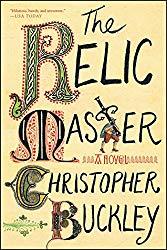
A crime caper steeped in art and history, the story follows one Dismas, the official relic master to Frederick, Elector of Saxony, and Albrecht, the soon-to-be Cardinal of Mainz, in the year 1517, when Luther has shattered faith in the Church and relics themselves begin to be called into question. He and his friend, none other than the preening Albrecht Dürer, get swept up in a scheme to make a copy of the Shroud of Chambery. The novel, like what one imagines 16th century Germany to be like, is earthy, humorous, and occasionally quite brutal. But it’s witty and shameless (“To Hell with Purgatory!”) and a perfect Renaissance romp about the intersections of art, piety, and politics.
3. "The Parable of the Blind" by Gert Hoffmann

A strange and haunting tale that looks at the painting of the same name by Pieter Bruegel the Elder, the novel is told from the perspective of the blind “sitters” for the painting on the day that Bruegel painted them. As they journey across a landscape of unseen people and obstacles, they wonder where they are going, why they are being painted, and why anyone would want to look upon them permanently when people turn their heads away in real life. Riddled with black humor, the novel is a picture of suffering and existential woe à la “Waiting for Godot,” and will linger in your mind long after you read it.
4. "The Muse" by Jessie Burton

Don’t be deceived when the cover calls this book a “Simmering romance” because it’s far more than that; it’s a meditation on artistic integrity and ownership wrapped up in a story of relationships that reads like a thriller. The novel follows two storylines that intertwine masterfully. In one, a Caribbean émigré trying to make her way in 1960s London dreams of becoming a writer but gets a job at a prestigious art institute working for the mysterious Marjorie Quirk. In the other, an English girl living in rural Spain in the 1930s yearns to become an artist and falls under the spell of the countryside and painter-turned-revolutionary Isaac Robles. It’s a vivid tale of love and loss, ego and creativity, that is a marvelous follow-up to her first novel, “The Miniaturist” (which you should also definitely read if you haven’t already!).
5. "Modern Art" by Evelyn Toynton
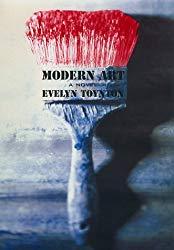
Inspired by the lives of Lee Krasner and her husband Jackson Pollock, this novel follows Belle Prokoff, an aging artist from the New York School, who has outlived her much more famous husband and spent her last few decades guarding his albeit troubled legacy. As she faces her own mortality and hires a grad student (who is also in love with an artist) as a live-in helper, Prokoff is forced to confront ghosts from her past when a nosy biographer comes sniffing around for dirt on her husband. Adroit and piercing, the novel asks what do you do with yourself after you have poured all of your being into someone else? And what does sacrificing yourself in that way do to you? Toynton tackles themes of suffering and artistic integrity with elegance and wisdom.
6. "The Moon and Sixpence" by W. Somerset Maugham
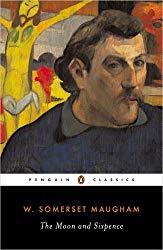
This classic novel follows a turn of the twentieth century English artist named Charles Strickland who abruptly abandons his family and life as a stockbroker to devote himself entirely to painting. Completely impoverished but in desperate pursuit of beauty, he studies in France and eventually ends up in Tahiti, where his artistic genius flourishes even as he suffers from leprosy. If this sounds reminiscent of the life of Paul Gauguin to you, you would not be mistaken--Somerset Maugham was inspired by the very same, only his version of the artist is by turns both more and less brutal than the real man. The Moon and Sixpence is a prime example of a kunstlerroman, a novel about an artist’s growth, painting the artist-hero as a necessarily anti-social being whose creative side can only flower in isolation and rebellion against social norms. While it’s not a perfectly accurate image of Gauguin’s life, and while the narrator espouses some outdated views about women and people of color, the book raises questions about genius and legacy that are still relevant today.
7. "Sunflowers" by Sheramy Bundrick

If you liked “Loving Vincent” or are just fascinated by the work of Vincent Van Gogh, then this novel is for you. Told from the perspective of the prostitute named Rachel unto whom Vincent famously bestowed part of his mutilated ear, the novel gives life to Vincent’s happy but troubled years in Arles. Many of the people he lovingly painted are presented in the flesh, from his friends like Joseph Roulin to the perfectly nasty Gauguin, whom readers will find reason to hate even more than in the “The Moon and Sixpence.” At its heart the book is a love story, but it’s punctuated by moments of both joyous artistic creation and those of the darkest depths of mental illness. His romantic self, a side of Vincent we don’t normally see, is explored with great sympathy. Written by an art historian, the novel is convincing and well-researched, and even includes a list of all the paintings referenced in the back.
8. "A Month in the Country" by J. L. Carr
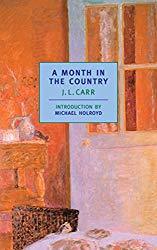
In this slim, poetic volume, a young Englishman recovering from a broken marriage and shell shock after the Great War finds himself spending a summer in a Yorkshire village, where he has been hired to uncover a medieval mural in a church. By night he sleeps in the church’s belfry, and by day he befriends the locals, bonds with another veteran whose been hired to uncover a medieval grave, and falls in love with the Vicar’s wife, all while working steadily at uncovering a medieval judgment scene. Tiny revelations--in the begrimed mural at which he’s chipping away, in his own wounded heart, and in the hearts of those around him--make up the soul of this placid yet powerful book that is a hymn to the healing power of art.
9. "I Always Loved You" by Robin Oliveira

With such a title this book might easily be dismissed as a typical romance, but it is actually a rarer thing: a story about love between two people that may never have been returned by either party. Namely, it chronicles the fraught and querulous relationship between Mary Cassatt and Edgar Degas. Set in a glittering and rain-washed Belle Époque Paris, the novel follows Mary Cassatt as she struggles to establish herself in the art world until Degas takes her under his wing. Her successes and sorrows over the years unfold alongside the drama of Degas’ vision loss and the grief-stricken love affair between fellow impressionists Berthe Morisot and her brother-in-law, Edouard Manet. Aside from being a vivid look at the politics of the Impressionist circle within the Parisian art world, it is also an eloquent tale about the struggle of artistic creation in the face of constant doubt, harsh criticism, and heartache. You can learn more about the puzzling relationship between Cassatt and Degas here.
10. "Portrait of an Unknown Woman" by Vanora Bennett
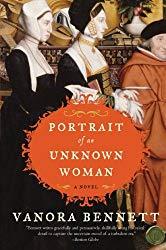
This novel follows Meg Giggs, the twenty-three-year-old ward of Sir Thomas More, at the eve of the Reformation in England. The More family, which will soon be torn by political, religious, and courtly strife, is visited by Hans Holbein the Younger, who paints their portraits multiple times with an uncanny ability to capture the hidden truths of their hearts. While More’s humanistic ideals become warped by anti-heresy fanaticism even as Henry VIII grows disenchanted with the faith More fiercely protects, Meg finds herself increasingly drawn to the German artist who embodies a more earthy, compassionate form of Humanism. While Bennett occasionally plays fast and loose with history (like the identity of the sitter in Holbein’s portrait of the titular name, for one), overall the book is richly drawn and well-researched. Even better, her descriptions of Holbein’s painting process for such enigmatic works as The Ambassadors is highly compelling. The dangerous times in which he lived, as well as a taste for symbolism in the Tudor world, meant Holbein had to couch the truths he perceived in iconography both subtle and complex, and Bennett illustrates this well.
11. "The Secret Book of Frida Kahlo" by F. G. Haghenbeck
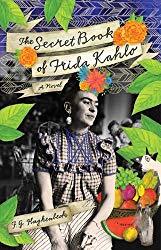
This colorful and spirited novel was inspired by a mysterious notebook found in Frida Kahlo’s house in Mexico City that was full of handwritten recipes the artist had collected over the years. A complex woman, Frida was quite the cook, and this novel explores the prominent place food had in her life, with recipes at the end of each chapter. Throughout the course of Frida’s tumultuous time on Earth, her marriages to Diego Rivera and her affairs with lovers from Georgia O’Keeffe to Leon Trotsky, she is haunted by a vision of death, whom she calls her Godmother, and whom she meets the day she almost dies in a trolley accident as a teenager. In Haghenbeck’s capable hands, Frida’s veneration of the Day of the Dead, her existential feminist fire, and the emotional intensity of her paintings come alive with surreal imagery and the imagined taste of Frida’s fabulous food on the tongue.
12. "I Am Venus: A Novel" by Barbara Mujica
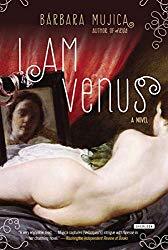
Told from the perspective of the unknown model who posed for what is arguably Velázquez’s most beautiful work, The Rokeby Venus, this novel follows Diego Velázquez’s rise to prominence in the Spanish court. Court life under Philip IV is depicted as a splendid bubble of contradictions: lavish and luxurious yet plagued by bankruptcy, lascivious and self-indulgent, yet clinging to a sober sense morality. Of course, one of the things that tantalizes most in this book is the mysterious production of the Venus painting, painted when feminine nudity on canvas was a punishable offense. However, Mujica also takes special care to chronicle Velázquez’s efforts to elevate art as a gentlemanly endeavor in a country where painters were regarded as mere tradesmen. (Seriously, before him, being an artist in Spain was the WORST.) Furthermore, she gives a voice to the women who surrounded him in his family and social circle, painting a broad picture of Spain itself through their experiences and hardships. This novel is evocative and compelling, and a perfect read for lovers of the Baroque artist.

As Vincent van Gogh once said, "It is with the reading of books the same as with looking at pictures; one must, without doubt, without hesitations, with assurance, admire what is beautiful." May you discover beauty and joy in all of your reading adventures!
By: Jeannette Baisch Sturman
#art books#must read#book list#reading list#art history#art historian#bibliophile#books books books#listicle#history of art#Susan Vreeland#Gert Hoffmann#Jessie Burton#Evelyn Toynton#W. Somerset Maugham#Sheramy Bundrick#J. L. Carr#Robin Oliveira#Vanora Bennett#F. G. Haghenbeck#Barbara Mujica#fun stuff
4 notes
·
View notes
Text
Strokes of Genius 10 Winners Announced
Congratulations to the 116 artists selected for North Light Books’ drawing competition Strokes of Genius 10: Inspiring Subjects. If you see your name below, please check your email for instructions on next steps. You will receive an email from us with the subject line “Strokes of Genius 10 Winner Notification” no later than September 22nd, 2017.
Artist’s First Name Artist’s Last Name Title
Carrie Alderfer Contemplation Jennifer Arthur Hooded Merganser Holly Bedrosian T Rex Paul Birchak Carnival Chris Breier Erie Canal -‐ Lockport, NY Tracy Butler Old Farmhouse Robert Caldwell Ristle-‐tee, Rostle-‐tee, now,now,now (Raven) Svetlana Cameron Sofia Patricia Caviar Garden Refuge Connie Chadwell “Easy Listening” Connie Chadwell Ballerina Anda Chance The Chop Shop Stephanie Chang Walking toward light Mary Chen Forlorn Eyes Kathy Christian Sitara Emily Christoff -‐ Flowers Listening to Mozart Mike Clapton Needle In The Hay Pamela Clements Historical Sight KATE COLLINS Sheep Meet Penny Collins THE HANGED MAN Colleen Corlett Gorgous George Cade Cunningham Make a Wish Barbara Dahlstedt You Can Make a Difference J. Adam Davis The Dreamer Mario DiGennaro Silver Tea Set Kathy Dolan After The Rain Ron Dunn Larissa -‐ Cheers! ZENA FAIRWEATHER Charlie Carolin Fernandez Free Spirit Tanja Gant Calista Ginger Gehres Squabble Jeff George Note to Self IRENE GEORGOPOULOU Playtime Marsha Gilger The Bachelor Pad Hans Guerin In Her Fur Shawl Gemma Gylling BFF’s -‐ Save The Elephants Linda Lucas Hardy It Don’t Make Sense But It’s So Much Fun Linda Lucas Hardy Pull to Open Paul Harman Light of a New Day Jane Hart Ragdoll Veronica Haskell Lisboa Fountain Kathy Hildebrandt All That Glitters Kathy Hildebrandt The Making of Mona Steven Hill Metallic Sunrise Narrows Canyon Paul Howe Power Darren Hughes Marcell’s Morning Blues Darren Hughes Tawny Frogmouth
Karen Hull Up the Creek Joel Iskowitz Inspiration of the Lincoln cent Kate Jenvey Eye to Eye GeorgeAnn Johnson Lioness Engagement JuliAnne Jonker Portrait of a Roman man Phil Kidd The Fall of Man Anthony Klinger-‐Cooley Cold Wind Elena Kolotusha Family ties Elena Kolotusha I am a Wild thing Zhiwei Kong My Backpack Jesse Lane Adrenaline Catherine Lidden Reclining Nude Liu Ling Xiao Fang Mark Loughney High Roller Yael Maimon Black Cat #5 Yael Maimon Little Red Riding Hood and the Big Bad Wolf #3 Yael Maimon Little Red Riding Hood in the City Yael Maimon Orange Cat CAROL E MALTBY, CPSA The Potter Suzanne Marcil Clearly Together Pete Marshall Fantasia Royale Jody Martin Being Lincoln Paco Martin Dominguez Mandarins and paper Angela Matuschka Winter Squirrel Glen Maxion Summer Notes donzell mcdonald City Living Kathleen McDonnell Along The Pond#2 Mark Merchant His Divine Grace Tara Merkt Eye of the Beholder Terry Miller No Weather For Sailing Terry Miller Old Lace Margaret Minardi Alternative World Margaret Minardi Last Living Thing Dale Marie Muller Fold Andrew Mutch Hampden Reflection Joe Myers CHIMP Karie O’Donnell Sarah Entangled helen oh Dancer Susan O’Neill Woman in Turquoise Randy Owen Arkhipov Chris Page Devan I Nancy Paquet Body Language Luis F Perez Death of a Bumble Bee 1 Luis F Perez Toro de Lidia 3 susan perrish Heritage Audrey Phillips Electric Blue Susan Cone Porges August Morning, 11 O’Clock at Quarry Rock Andrew Purdy Bone Yard
Andrew Purdy Urban Patina Dan Pyle Pageant Carolyn Quinn-‐Hensley Cabaret de le Boheme Ann Ranlett Safety Randy Redetzke Harleena Terri Rosenblum Baboon Susan Rubin Lupine Ferhat Salgin Serenity Gayla Salvati Study In Stripe Elissa Sampson Playing Games With My Heart David Sandell God and Soldier Diana Sarkar Conner Brent Schreiber Listen 21 Bill Shoemaker The Little Rascals sarah simmonds BLOSSOM Davis Smith Counting My Blessings Daniel Sorensen Ciara LAURENE SPINO Dance for Joy LAURENE SPINO Mocha Anne Strutz Bunker Kamaraj Sugumaran I am a day artist Vicki Sullivan Kinima Anselmo Swan Coffee Cup Caleb Tay Blending In Katherine Thomas Classics Lucy Tolkunova Dreaming Cathryne Trachok Leaning In Melissa B Tubbs Budny Boys Melissa B Tubbs Howell Home Sandra Weiner Giraffe Love Dexter Welcome “The Composer ii” Mike Wharton Early Thaw michelle Wiser Armadillo wei yan Listening Bora YILMAZYIGIT BORA
The post Strokes of Genius 10 Winners Announced appeared first on Artist's Network.
from Artist's Network http://ift.tt/2yoy8vY
0 notes
Text
Hyperallergic: Resituating Kerry James Marshall in a Black Radical Tradition
Kerry James Marshall, “Past Times” (1997), acrylic and collage on canvas, 9 ft. 6 in. × 13 ft. (photo by Nathan Keay, © MCA Chicago)
Kerry James Marshall’s work arises from a black radical tradition that encompasses pan-African, Caribbean, and Black Atlantic writing, philosophy, and art. Yet the current retrospective exhibition Kerry James Marshall: Mastry, jointly mounted by the Museum of Contemporary Art, Chicago, the Metropolitan Museum of Art, New York, and the Museum of Contemporary Art, Los Angeles, leaves a vast silence around the black and African diasporic dimensions of his work. Ensconced within a project of demonstrating his relation to the Western canon (including comparisons to Dürer, Degas, Holbein, Chardin, Cézanne, Velasquez, Courbet, Eakins, Watteau, etc.), these institutions remain locked into a white historical narrative in which Marshall’s work inevitably appears as “belated.”
Curator Helen Molesworth observes how Marshall’s figurative painting was out of step with the move towards abstract art and nonrepresentational work engaged in institutional critique, such as by artists Michael Asher, Daniel Buren, and Hans Haacke, or later Mark Dion and Fred Wilson, making Marshall’s work seem like naïve realism. She writes in the exhibition catalogue, “I fear I have a lingering ambivalence or anxiety that assumes belatedness is a charge rather than a virtue.” In making up for this anxiety and trying to position Marshall as both a master Western painter and a master of institutional critique, the curatorial essays extensively reference the white, male, Western canon of painting, but mostly ignore the ways in which Marshall’s work fits into and extends black visual culture, black feminist art, and what he calls “black aesthetics.”
In his discussion of Mickalene Thomas’s work (reprinted in a selection of his essays in the catalogue), Marshall writes that the black aesthetic “is an atmosphere, a tone, a ‘vibe.’ ‘Black aesthetics’ embody the ‘twoness’ W.E.B. Du Bois wrote about in The Souls of Black Folk: it is glamorous and impoverished, structured and improvisational, naïve and sophisticated, brash and abject. Its first principle is a desire for self-representation.” Marshall therefore finds it curious that in discussions of Thomas’s work amongst curators, “no black antecedents seem to arise as potential influences on the development of her style.” We could say the same of this exhibition’s catalogue, apart from Marshall’s own writing. Although the curators briefly acknowledge references in Marshall’s paintings to pan-Africanism, Civil Rights, Black Panthers, and radical black writers like Ralph Ellison, Aimé Césaire, and Angela Davis, the limitations of the Western (and American) curatorial framework overlook the key symbolism of Haitian Vodou and the crucial influence of the spirits, or “mystères” in Haitian Creole, in his work.
In an essay Marshall wrote for the Krannert Art Museum in 2004, “Bill Traylor, William Edmondson and the Modernist Impulse,” also reprinted here, he excoriates white art critics and museums for embracing and celebrating black folk artists while ignoring or offering only lukewarm approval for academically trained black artists including Norman Lewis, Romare Bearden, Hale Woodruff, Elizabeth Catlett, and Lois Mailou Jones, whom he refers to as “masters all in the African American canon.” In another 2010 essay on Chris Ofili, Marshall complains of not seeing anywhere in contemporary museums an Ofili, Jean-Michel Basquiat, Kara Walker, Carrie Mae Weems, Kehinde Wiley, or Mickalene Thomas: “Ain’t these some quality artists? Somebody tell me what’s up with that shit.” And he is right. While many of these artists now have far more museum presence, the critical framing of their work has yet to challenge canonical assumptions.
Yet the curators fail to take his cue and consistently compare his work to the Western (white, male) canon. An African diasporic reading of Marshall’s work, in contrast, can help interpret its rich tapestry of visual references, which lead far beyond Western art history. Art historian Krista Thompson, in her study Shine: The Visual Economy of Light in African Diasporic Aesthetic Practice, borrowing from Ellison’s term “un-visibility” in Invisible Man, calls on us “to put pressure on the forces, institutions, and disciplinary structures that might erase, discount, and render certain African diasporic practices un-visible.” Haitian anthropologist Gina A. Ulysse likewise argues that representations of Vodou in white Western contexts have an especially long troubled history of distortion and suppression. It is therefore incumbent upon us to place Marshall’s work within these black aesthetic traditions, as well as in relation to the folk traditions and “outsider art,” including the visual arts of Vodou.
Kerry James Marshall, “When Frustration Threatens Desire” (1990), acrylic and collage on canvas, 80 × 72 in. (image courtesy Collection of April Sheldon and John Casado)
Marshall is explicit about his influences. In his painting “When Frustration Threatens Desire” (1990), he describes it as combining “symbolic representations of the seven African powers from the Yoruba pantheon … and some ve-ve from Haitian Voodun,” mixed with traditions of Western pictorial representation:
What also started to crystallize in that painting was a way to bring together not only Western traditions of pictorial representation, but folk traditions of painting that have an equally valid authority. I don’t see much difference between using Giotto or Bill Trayler as a point of reference. To me they’re the same.
Here we find the veve, a Vodou symbol drawn in powdery white designs that summon lwa, or spirits. There is one for Ogou Feray, the lwa of blacksmiths, fire, and war, and another heart-shaped veve for Erzulie Freda, the lwa of love, beauty, and femininity. We see the black cat symbol of European witchcraft, but also the snake representing the lwa Dambala, the primordial creator of all life, sometimes called the “Great Master.” Marshall’s Vodou imagery is very precise and depicts specific practices, usually known only to initiates. The Met labels name a few of these lwa in passing, and mention the use of veve, yet offer no interpretation of what they represent, where they come from, and what they mean in the context of a syncretic tradition of visual representation that is both Western and Afro-Caribbean.
Kerry James Marshall, “Slow Dance” (1992–93), acrylic and collage on canvas (courtesy the David and Alfred Smart Museum of Art, University of Chicago Purchase, Smart Family Foundation Fund for Contemporary Art, and Paul and Miriam Kirkley Fund for Acquisitions)
The religious symbols of Haitian Vodou appear prominently throughout Marshall’s work, but especially in the paintings from 1989–93 that include the white veves drawings, spiritual candles in sequined bottles, numerology drawn from the Kabbalah, and the combination of crosses and phallic sexuality associated with the Gede spirit Baron Samedi. Ezili Freda, a spirit also associated with art, romance, jealousy, passion, and sex, manifests in “Slow Dance” (1992–93). On the table is the veve for Papa Legba, guardian of the crossroads and intermediary between the material and the spiritual world, between God and humanity. Unequipped to see these aspects of black aesthetics as important to art history, the institutional apparatus of labels, catalogues, and curatorial essays generally passes over them quickly, erasing their significance for Marshall’s positioning as an artist. Adding these readings back in can transform how we see his paintings.
Kerry James Marshall, “Could This Be Love” (1992), acrylic and collage on canvas, 8 ft. 7 in. × 9 ft. 6 in. (private collection, courtesy Segalot, New York)
In “Could This be Love?” (1991), veve for Ezili plays an especially prominent role, accompanied by ritual candles, the number 7, which stands for love, the words “La Venus Negra,” and the song lyrics “Yes I’ve got two lovers and I love them both.” The painting here crucially illustrates the practice among devotees to enter a “spiritual marriage” with the lwa, carrying out special ritual practices on a particular day of each week, which involve preparing a bedroom, clothing, flowers, perfume, and candles. These are more than “African American interiors,” as the catalogue entry tells us. Is the artist indicating his own spiritual marriage with Ezili Freda?
Then there are Marshall’s portraits with golden halo effects, including his puzzling “Self Portrait of the Artist as a Super Model” (1994). Do they reference the popular chromolithographs of Ezili Freda as the Mater Dolorosa with her wounded heart? Or Ezili Danto, fierce mother and protector of children, one of the most famous portraits of black female beauty to circulate across the Black Atlantic world? If Marshall’s golden halos and patterned backgrounds echo Western art traditions, they do so refracted through the folk traditions of the Afro-Atlantic world, where their meanings are doubled: as much Vodou as Christian.
Kerry James Marshall, “Self-Portrait of the Artist as a Super Model” (1994), acrylic and collage on board, 25 × 25 in. (collection of Craig Lathrop and Jennifer Roblin, image courtesy Met Breuer and the artist)
In “Voyager” (1992), there is a prominent veve for Papa Legba, as well as one above it for Maman Brigitte, lwa of death and fertility, and protector of cemeteries, whose colors are black, purple, and white. The curved boat with the small triangular sail is the symbol for the spirit Agwe, whose colors are white and blue, and whose ceremonies involve floating offerings into the water. Agwe is not only a protector of fishermen in the Caribbean, but also represents a memory of the many African ancestors lost on the Middle Passage who are said to have passe anba dlo, or passed under the water to return to Guinée.
Within this rich cultural context, Marshall’s work combines both mastery and mystery, yet the curators largely give us a narrative of mastery framed by Western art history and limited by an American national focus. Curator Ian Alteveer situates Marshall’s work biographically in relation to Los Angeles, where he moved as a child, and Chicago, where he lived as an adult. Titling his essay “A Different Light: Kerry James Marshall’s Western Exposure,” Alteveer seems to be commenting on both the bright sunlight of California and Marshall’s exposure to Western academic painting. Curator Dieter Roelstraete reads the work as “Realist” and mainly concerned with figuration, making the invisible visible, and a “predeliction for literalism and a resistance to metaphor” — completely missing the nonliteral, metaphorical, and spiritual aspects of the work. Roelstraete positions this realism as a difficult move in the midst of poststructuralism and abstract expressionism, once again reading the work in contrastive comparison to white canonical masters like Kline, de Kooning, Motherwell, and Pollock.
In the only curatorial essay by a woman of color, Lanka Tattersall comes closest to black aesthetics with her essay “Black Lives, Matter.” Yet like the others, her discussion of making blackness visible avoids situating Marshall’s work in relation to the wider cultural production of Caribbean, Black Atlantic, and African contemporary art. All of the curatorial essays and catalogue entries ignore Marshall’s self-positioning in relation to the tensions between pan-African folk art and Western modernism, a central theme in his work, and between the Western canon and black aesthetics. It is as if they still want to anoint him as a legitimate painter by refusing such “outdated” identity politics, purifying his intentions as painterly.
Kerry James Marshall, “School of Beauty, School of Culture” (2012), acrylic and glitter on canvas 8 ft. 11 7/8 in. × 13 ft. 1 7/8 in. (photo by Sean Pathasema)
Looking again at Marshall’s paintings, we might interrogate not just their “jet black, ebony black, charcoal black, obsidian black, velvety black, inky black,” as Molesworth describes, but also the ways in which they shine, a key aspect that Krista Thompson has identified in black popular photography and recent portrait painting. “School of Beauty, School of Culture” contains not only numerous pinned-up portrait photos, but also a camera flash lighting up the central mirror reflection, as if the artist were taking a photo of the scene. Thompson highlights how artists such a Kehinde Wiley and Ebony G. Patterson use these popular photographic practices in works such as Wiley’s “Three Boys” (2013), or Patterson’s 2013 project “Illuminated Presence” with urban youth in Chicago. When Marshall compares Mickalene Thomas’s “sparkle factor” to that of Haitian Vodou priest and flag maker Silva Joseph he says, “I have to say no one does sparkle better than the Haitians.” With his gold glitter and frequent depictions of lanterns, candles, studio lights, and light rays, he underlines his relation to a black aesthetic sensibility and visual economy of light that extends transversally across the Caribbean and African diaspora into African America, from the signed Lauryn Hill poster above the central mirror, to the Chris Ofili exhibition poster from Tate Britain, to the advertisement for Dark & Lovely “Ultra Glow” make-up.
The violence of refusing to allow blackness to be self-referential reiterates the white supremacy of Western art because it leaves only the aspiration to be included in white institutions. Let’s therefore contextualize this black artist’s work not just in relation to white male artists, as the curators do, but also in relation to the treatment of black female bodies, hair styles, and ideas of beauty by artists like Kara Walker, Mickalene Thomas, Wangechi Mutu, and María Magdalena Campos-Pons. The full-bottomed, shining female figures in “Black Star 2” and “School of Beauty, School of Culture,” produce a black cultural landscape that moves across the Atlantic world (referring to Marcus Garvey and the United Negro Improvement Association’s Black Star Line, which aimed to build connections across the Black Atlantic and Caribbean world) and simultaneously dismisses the constricted white American version of female beauty. Thus Marshall’s work speaks as much of exposure to pan-African cultural influences — and glowing light — as it does of any “Western exposure.”
Lets’s compare his style to Romare Bearden, quilt-maker Plummer Pettway, and “master” Haitian flag maker Myrlande Constant. Let’s compare his portraits to those by Kehinde Wiley, Ebony G. Patterson, Chris Ofili, and Ghanaian photographer Ben Bond. Let’s adjust our white gaze and Western art histories to make visible the double consciousness of a black gaze and black aesthetic traditions inside and outside the museum, as well as within and beyond the material. Only then will we begin to school ourselves in black beauty and black culture.
Kerry James Marshall: Mastry continues at the Met Breuer (945 Madison Ave, Upper East Side, Manhattan) through January 29.
The post Resituating Kerry James Marshall in a Black Radical Tradition appeared first on Hyperallergic.
from Hyperallergic http://ift.tt/2jmg8wx
via IFTTT
0 notes